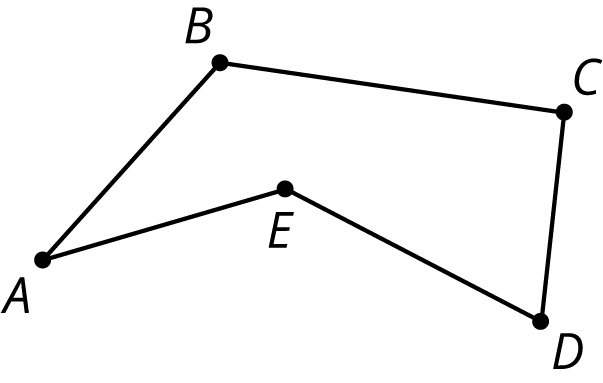Lesson 4
Coordinate Moves
Let’s transform some figures and see what happens to the coordinates of points.
4.1: Translating Coordinates
Select all of the translations that take Triangle T to Triangle U. There may be more than one correct answer.

- Translate \((\text-3,0)\) to \((1,2)\).
- Translate \((2,1)\) to \((\text-2,\text-1)\).
- Translate \((\text-4,\text-3)\) to \((0,\text-1)\).
-
Translate \((1,2)\) to \((2,1)\).
4.2: Reflecting Points on the Coordinate Plane
-
Five points are plotted on the coordinate plane.
-
Using the Pen tool or the Text tool, label each with its coordinates.
-
Using the \(x\)-axis as the line of reflection, plot the image of each point.
- Label the image of each point with its coordinates.
-
Include a label using a letter. For example, the image of point \(A\) should be labeled \(A’\).
-
-
If the point \((13,10)\) were reflected using the \(x\)-axis as the line of reflection, what would be coordinates of the image? What about \((13, \text-20)\)? \((13, 570)\)? Explain how you know.
-
The point \(R\) has coordinates \((3,2)\).
- Without graphing, predict the coordinates of the image of point \(R\) if point \(R\) were reflected using the \(y\)-axis as the line of reflection.
-
Check your answer by finding the image of \(R\) on the graph.

-
Label the image of point \(R\) as \(R’\).
-
What are the coordinates of \(R’\)?
- Suppose you reflect a point using the \(y\)-axis as line of reflection. How would you describe its image?
4.3: Transformations of a Segment
The applet has instructions for the first 3 questions built into it. Move the slider marked “question” when you are ready to answer the next one. Pause before using the applet to show the transformation described in each question to predict where the new coordinates will be.
Apply each of the following transformations to segment \(AB\). Use the Pen tool to record the coordinates.
-
Rotate segment \(AB\) 90 degrees counterclockwise around center \(B\) by moving the slider marked 0 degrees. The image of \(A\) is named \(C\). What are the coordinates of \(C\)?
-
Rotate segment \(AB\) 90 degrees counterclockwise around center \(A\) by moving the slider marked 0 degrees. The image of \(B\) is named \(D\). What are the coordinates of \(D\)?
-
Rotate segment \(AB\) 90 degrees clockwise around \((0,0)\) by moving the slider marked 0 degrees. The image of \(A\) is named \(E\) and the image of \(B\) is named \(F\). What are the coordinates of \(E\) and \(F\)?
-
Compare the two 90-degree counterclockwise rotations of segment \(AB\). What is the same about the images of these rotations? What is different?
Suppose \(EF\) and \(GH\) are line segments of the same length. Describe a sequence of transformations that moves \(EF\) to \(GH\).
Summary
We can use coordinates to describe points and find patterns in the coordinates of transformed points.
We can describe a translation by expressing it as a sequence of horizontal and vertical translations. For example, segment \(AB\) is translated right 3 and down 2.
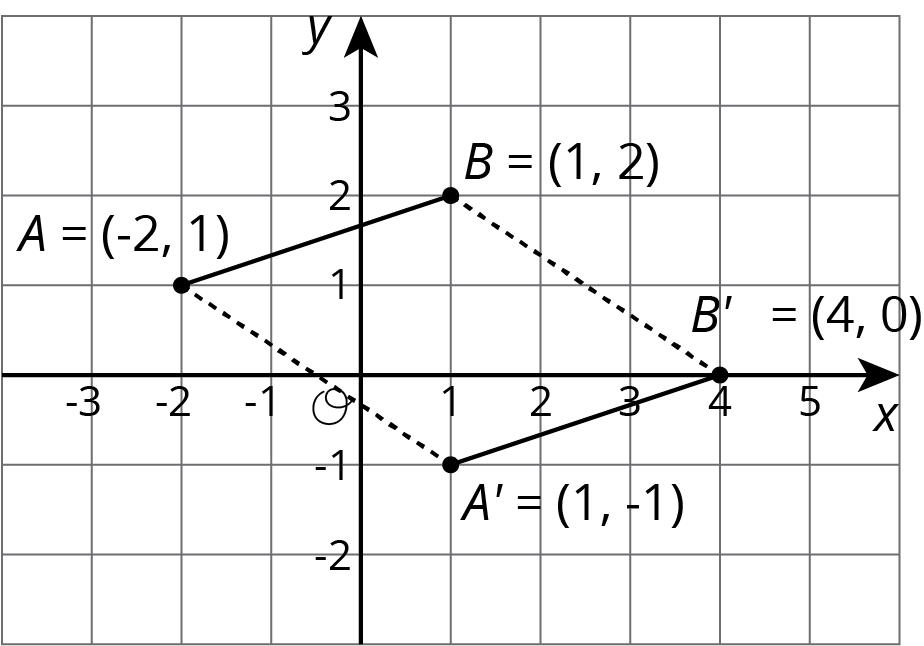
Reflecting a point across an axis changes the sign of one coordinate. For example, reflecting the point \(A\) whose coordinates are \((2,\text-1)\) across the \(x\)-axis changes the sign of the \(y\)-coordinate, making its image the point \(A’\) whose coordinates are \((2,1)\). Reflecting the point \(A\) across the \(y\)-axis changes the sign of the \(x\)-coordinate, making the image the point \(A’’\) whose coordinates are \((\text-2,\text-1)\).
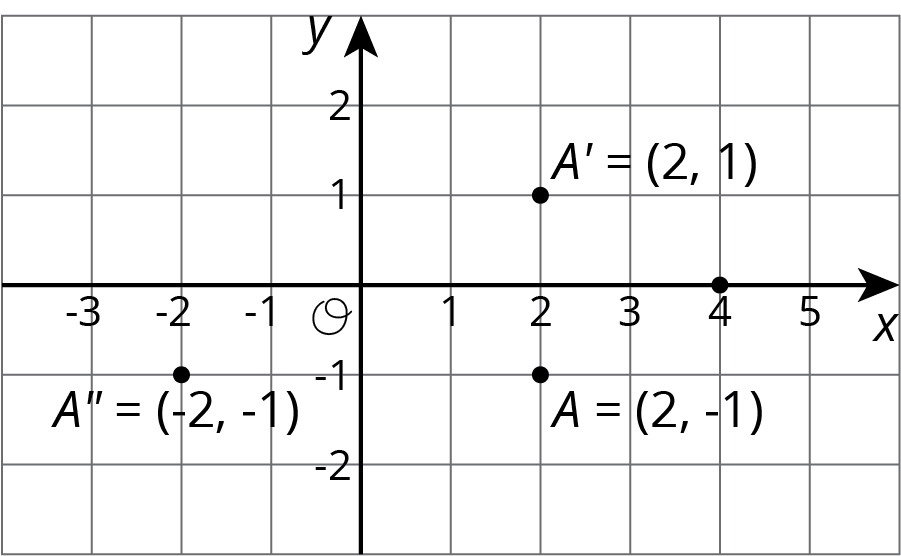
Reflections across other lines are more complex to describe.
We don’t have the tools yet to describe rotations in terms of coordinates in general. Here is an example of a \(90^\circ\) rotation with center \((0,0)\) in a counterclockwise direction.
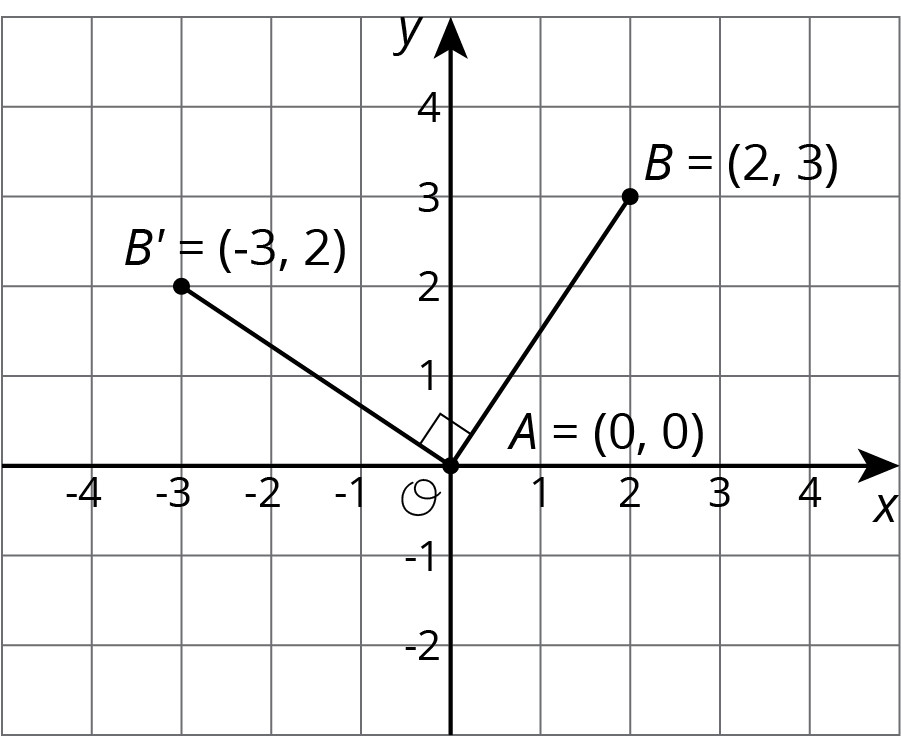
Point \(A\) has coordinates \((0,0)\). Segment \(AB\) was rotated \(90^\circ\) counterclockwise around \(A\). Point \(B\) with coordinates \((2,3)\) rotates to point \(B’\) whose coordinates are \((\text-3,2)\).
Glossary Entries
- clockwise
Clockwise means to turn in the same direction as the hands of a clock. The top turns to the right. This diagram shows Figure A turned clockwise to make Figure B.
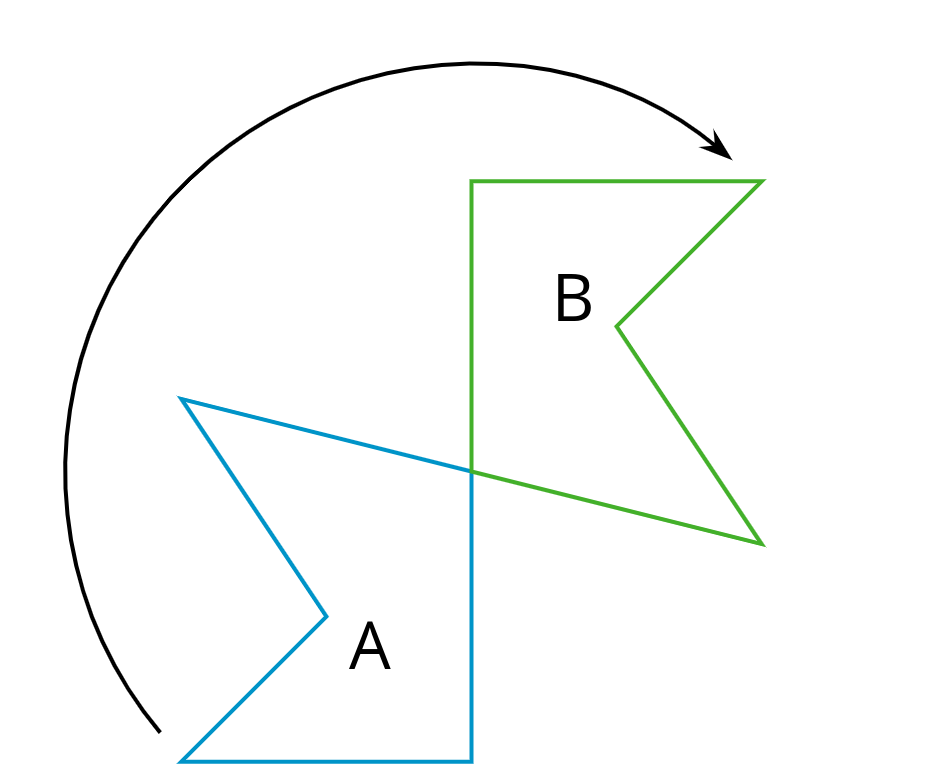
- coordinate plane
The coordinate plane is a system for telling where points are. For example. point \(R\) is located at \((3, 2)\) on the coordinate plane, because it is three units to the right and two units up.

- counterclockwise
Counterclockwise means to turn opposite of the way the hands of a clock turn. The top turns to the left.
This diagram shows Figure A turned counterclockwise to make Figure B.

- image
An image is the result of translations, rotations, and reflections on an object. Every part of the original object moves in the same way to match up with a part of the image.
In this diagram, triangle \(ABC\) has been translated up and to the right to make triangle \(DEF\). Triangle \(DEF\) is the image of the original triangle \(ABC\).

- reflection
A reflection across a line moves every point on a figure to a point directly on the opposite side of the line. The new point is the same distance from the line as it was in the original figure.
This diagram shows a reflection of A over line \(\ell\) that makes the mirror image B.
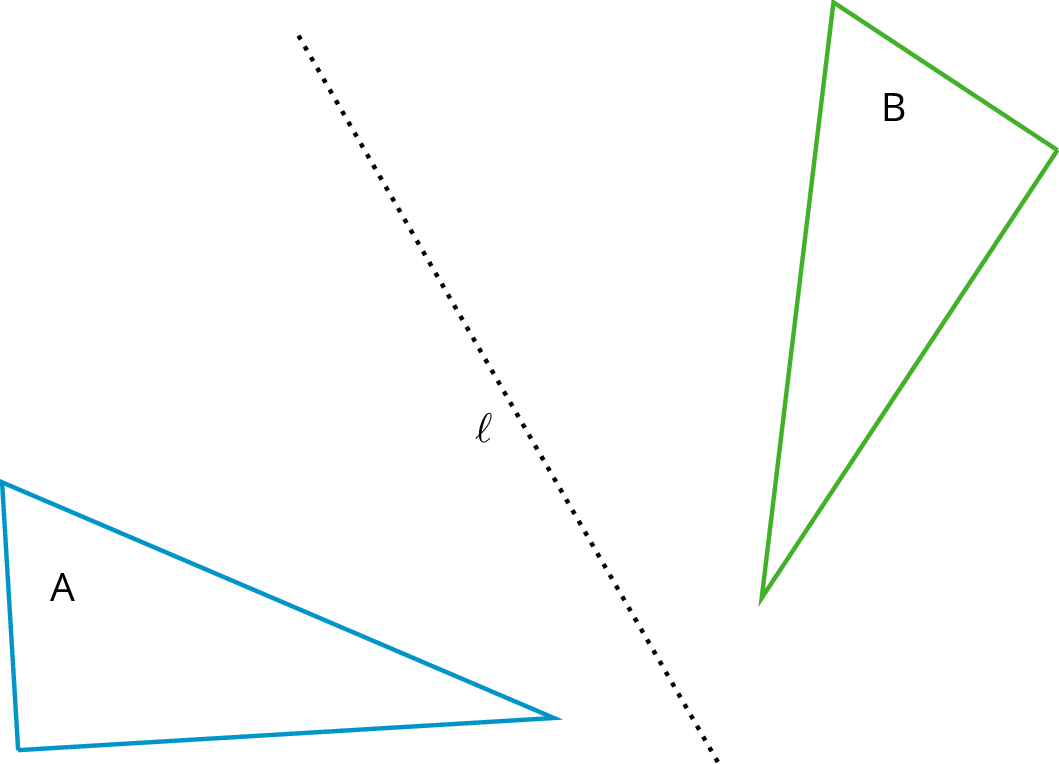
- rotation
A rotation moves every point on a figure around a center by a given angle in a specific direction.
This diagram shows Triangle A rotated around center \(O\) by 55 degrees clockwise to get Triangle B.
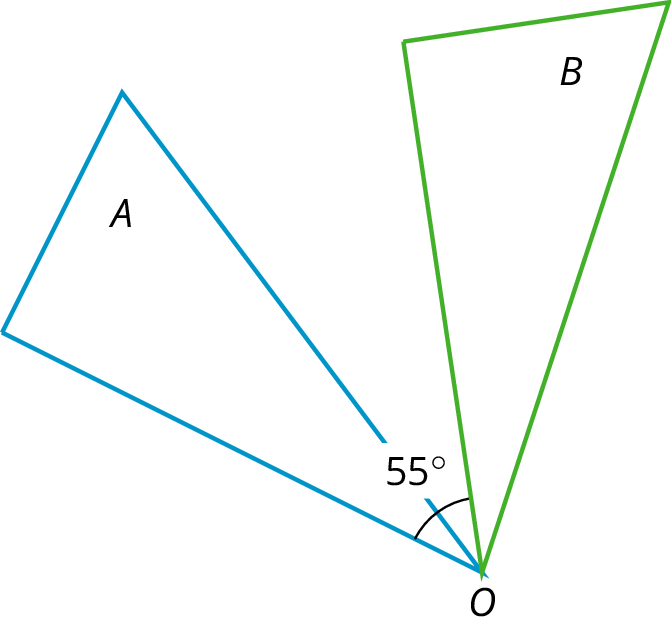
- sequence of transformations
A sequence of transformations is a set of translations, rotations, reflections, and dilations on a figure. The transformations are performed in a given order.
This diagram shows a sequence of transformations to move Figure A to Figure C.
First, A is translated to the right to make B. Next, B is reflected across line \(\ell\) to make C.

- transformation
A transformation is a translation, rotation, reflection, or dilation, or a combination of these.
- translation
A translation moves every point in a figure a given distance in a given direction.
This diagram shows a translation of Figure A to Figure B using the direction and distance given by the arrow.
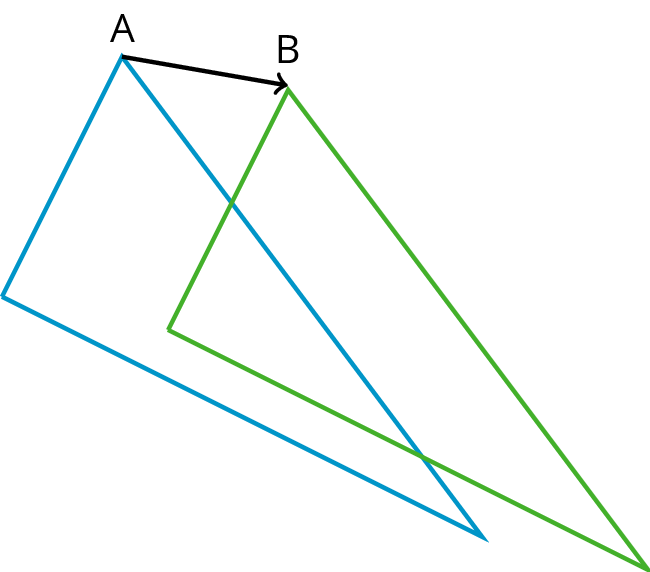
- vertex
A vertex is a point where two or more edges meet. When we have more than one vertex, we call them vertices.
The vertices in this polygon are labeled \(A\), \(B\), \(C\), \(D\), and \(E\).
